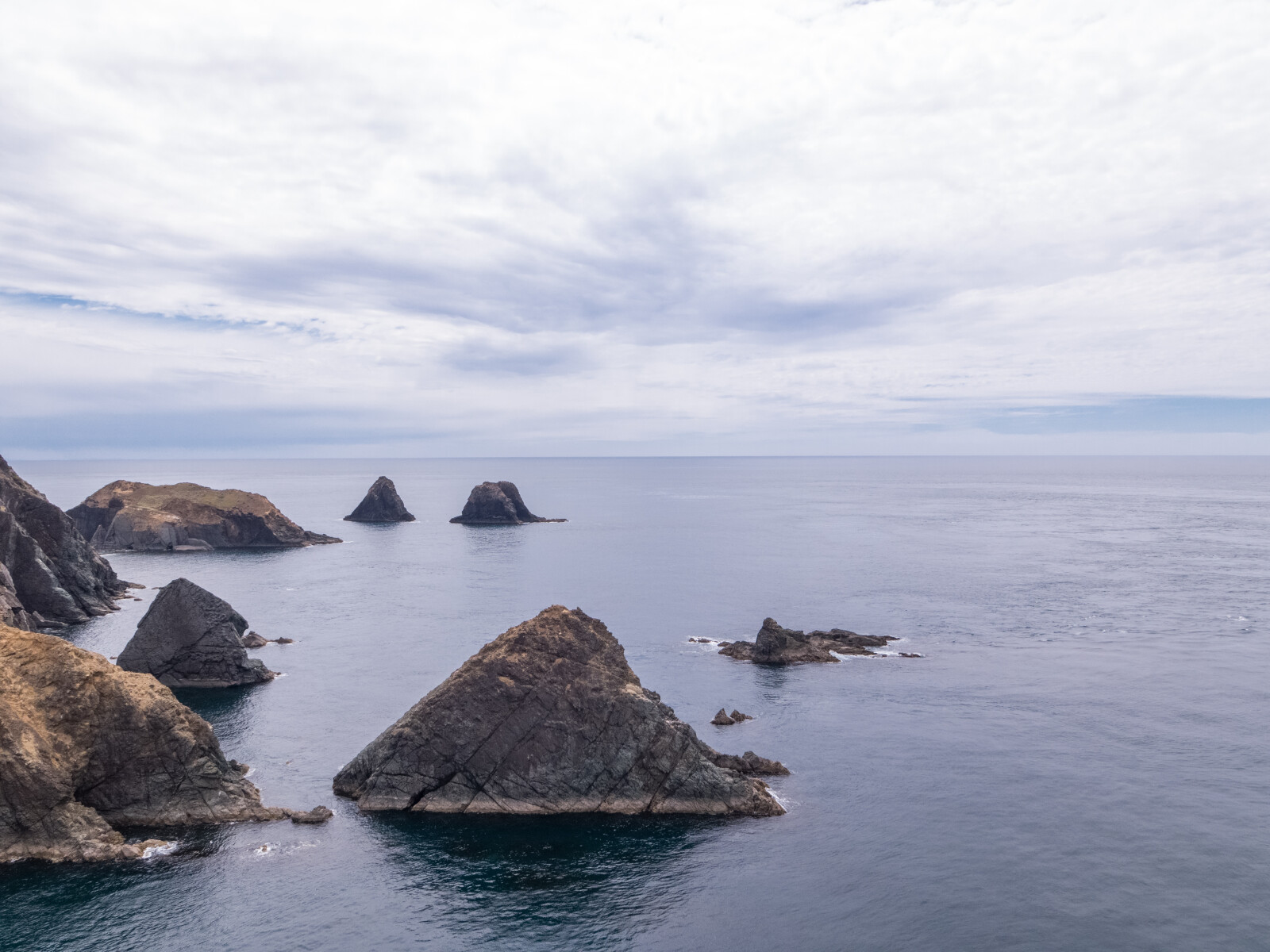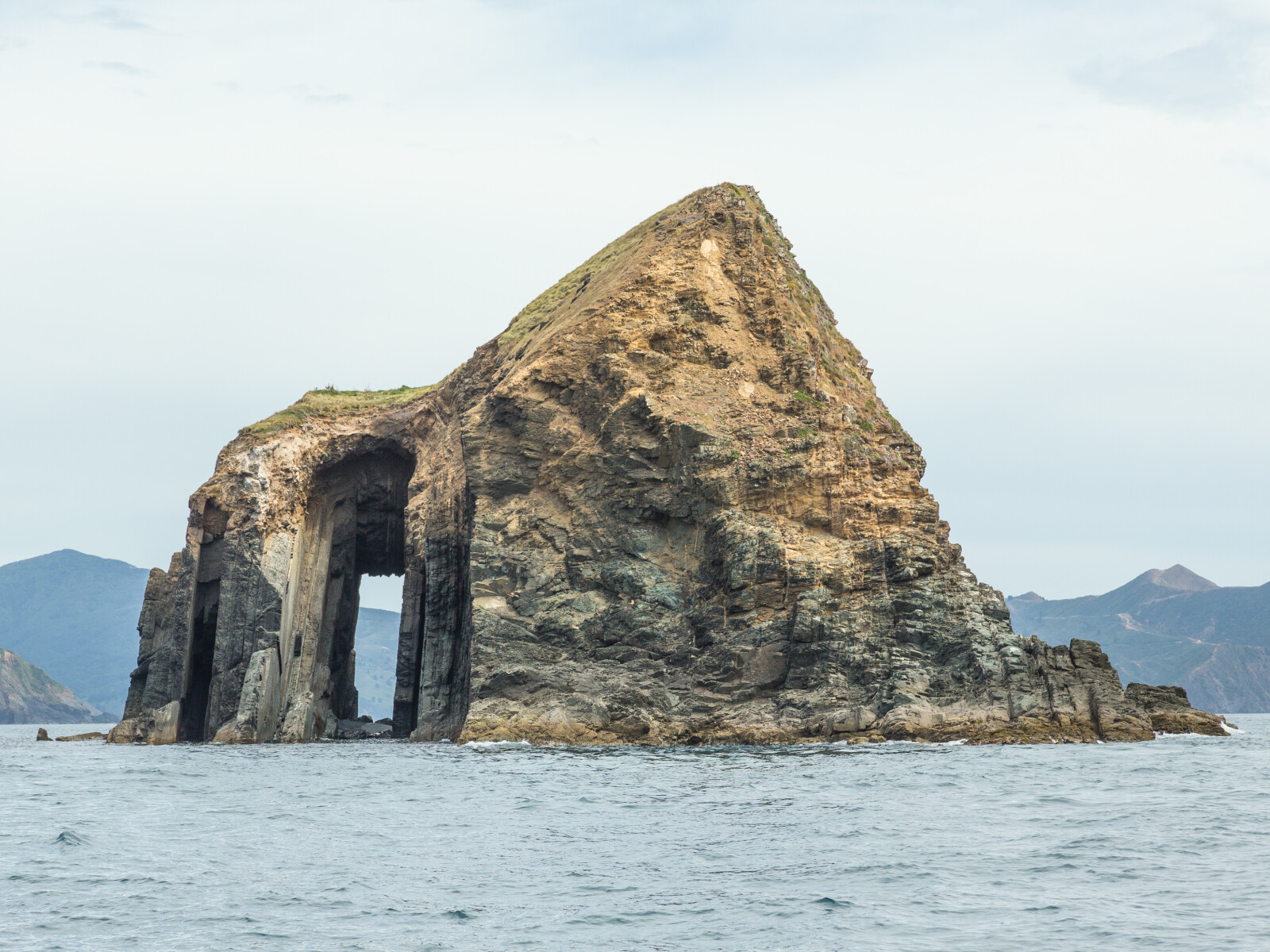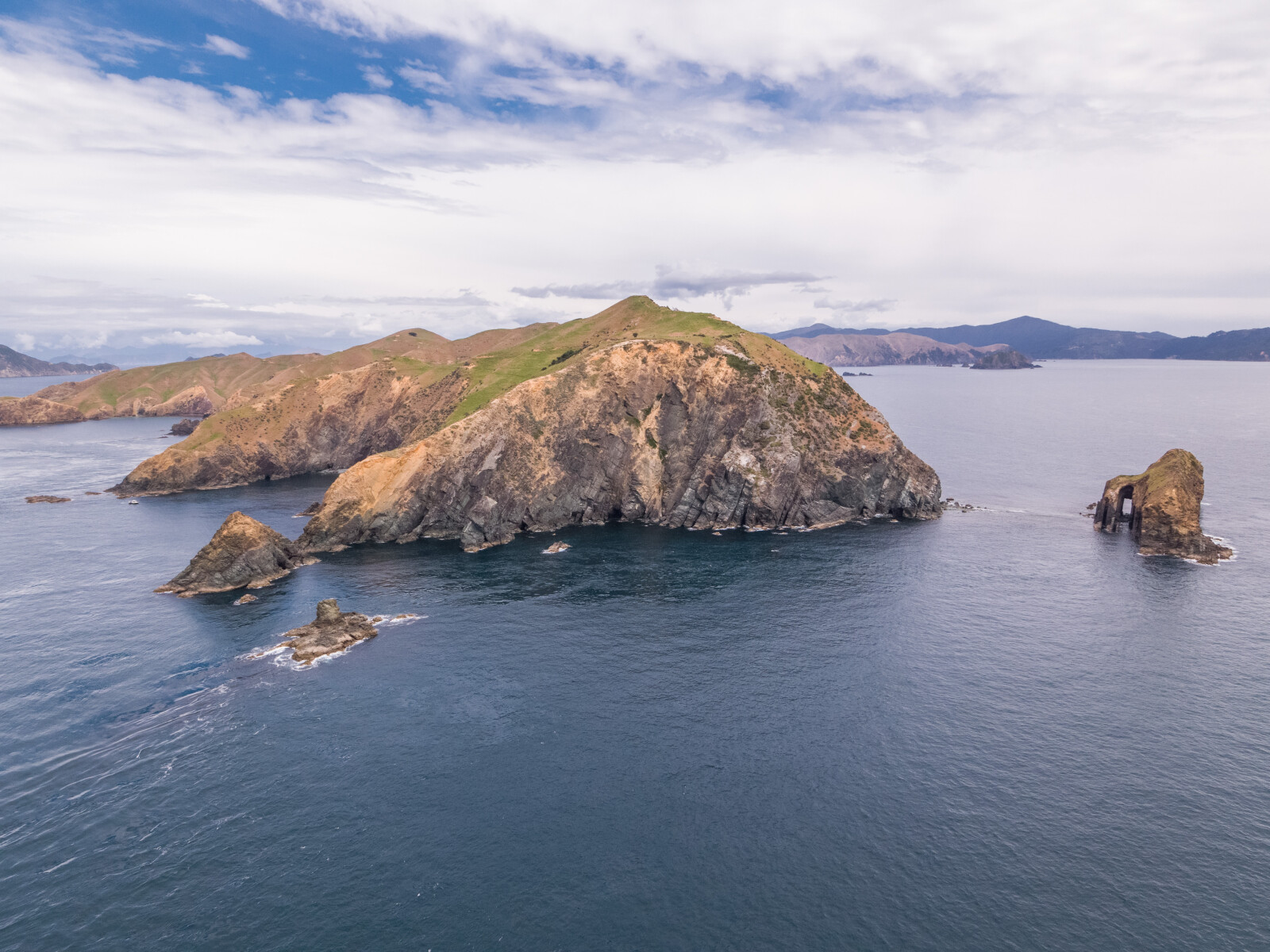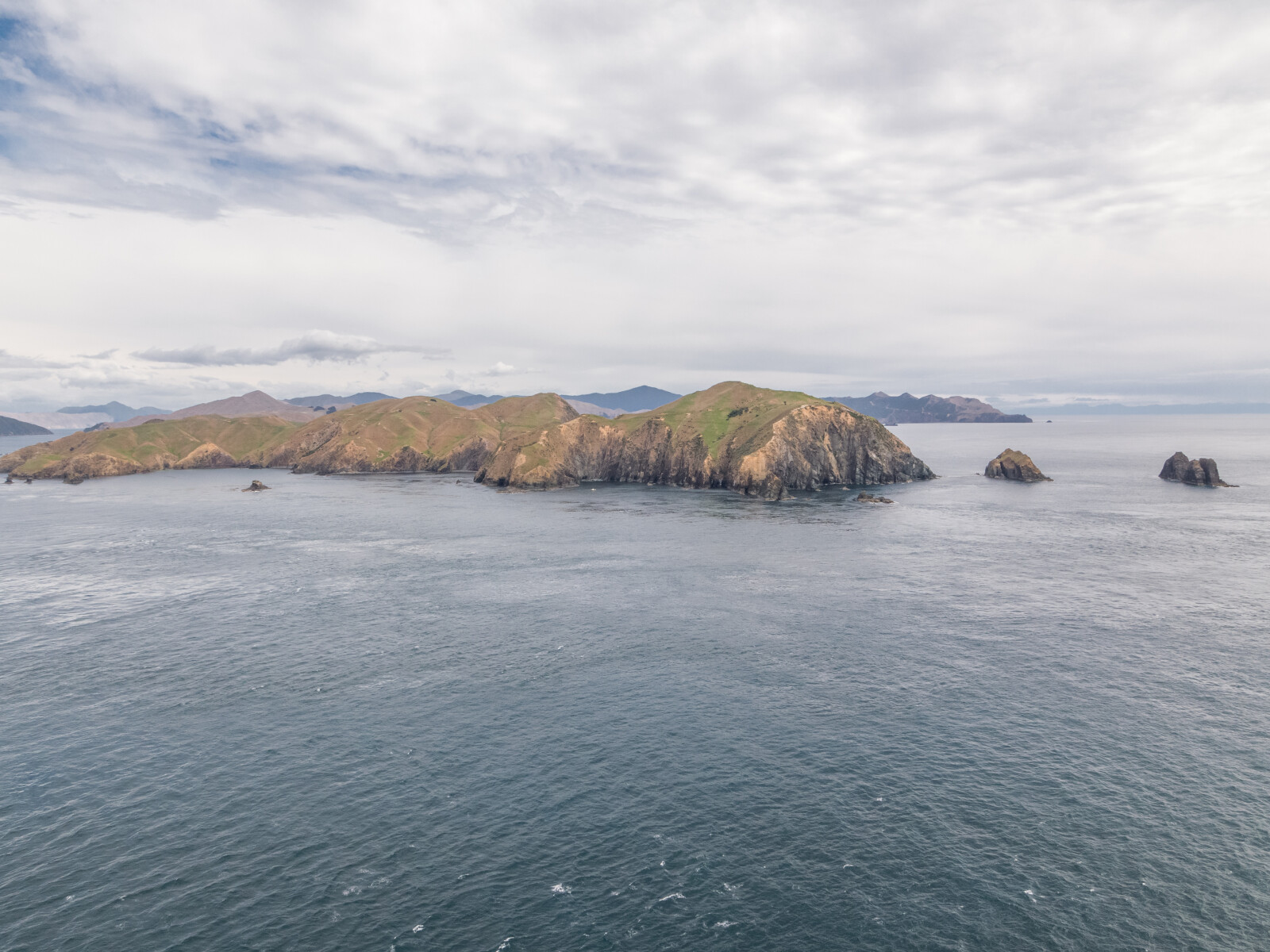This is the northern most end of D’Urville and rises to a height of almost 200 m. The western part of the cape is joined to a steep island by a shingle spit. This island is separated by a clear passage, about 200 m wide, from two further islets called The Sisters. The passage usually has a strong tidal current through it and a tiderip across its eastern end. It is not advisable to use the passage under sail alone.
Stephens Passage between Cape Stephens and Stephens Island can be an extremely turbulent area with bad tiderips and overfalls. The passage should not be used in bad weather and can even be difficult in calm conditions if the tide flow is strong and there is any ground swell. The passage can be a trap particularly if travelling east with the ebb tide if there is a southerly ground swell, as on the Port Hardy side the sea is deceptively calm.
The passage should be used either at slack water or with wind, ground swell and tidal stream in the same direction. It is best to travel close to the eastern shore of Cape Stephens from Hells Gate to Billlhook Bay. This route quickly leads out of the tide rips and overfalls and avoids the turbulence near Saddle and Tower Rocks.
The tide streams flow to the east with the ebb and to the west with the flood and change at about the same time as local low water and high water.







